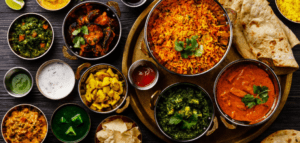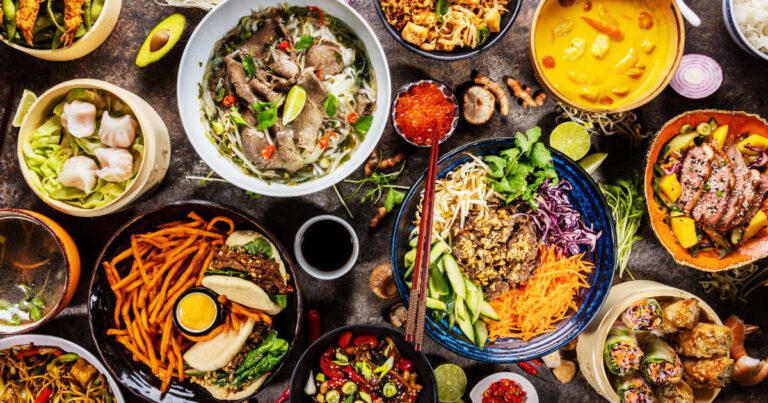Culinary Tourism, often referred to as food tourism, is a delectable journey that combines the love for travel and the passion for food. It’s a global exploration of flavors, traditions, and cultures through the lens of cuisine. In this article, we’ll delve deep into the world of Culinary Tourism, exploring its various aspects, from the must-visit destinations to the delightful dishes you can savor. Join us on this culinary adventure as we tantalize your taste buds and ignite your wanderlust.
Understanding the Cultural Connection
Food as a Reflection of Culture
Food serves as a profound reflection of a region’s culture. It tells the story of a place, its history, and the people who call it home. Whether it’s the spicy curries of India, the sushi of Japan, or the pasta of Italy, each dish is a culinary masterpiece deeply rooted in the cultural heritage of its origin. When embarking on a culinary tourism adventure, travelers get the chance to experience these cultural narratives firsthand by indulging in authentic, traditional cuisine.
The Role of Traditions and Rituals
Culinary traditions and rituals are an integral part of a culture’s culinary identity. These customs dictate how food is prepared, served, and enjoyed. From the intricate tea ceremonies of Japan to the communal feasts of the Mediterranean, these rituals offer a glimpse into the values and beliefs of a society. Culinary tourists have the privilege of not only savoring these dishes but also participating in these time-honored traditions, immersing themselves in the heart of the culture.
Culinary Tourism as an Immersive Experience
Connecting with Locals
One of the most rewarding aspects of culinary tourism is the opportunity to connect with locals. Sharing a meal with residents allows travelers to gain insights into their way of life, fostering cross-cultural understanding and building meaningful connections. Whether it’s chatting with street food vendors in Bangkok or dining with a family in a Tuscan farmhouse, these interactions create lasting memories that extend beyond the dining table.
Exploring Local Markets and Ingredients
Exploring local markets is like embarking on a culinary treasure hunt. These vibrant hubs offer a glimpse into the diverse array of ingredients used in regional cuisine. From bustling spice bazaars in Marrakech to the fresh produce markets of Barcelona, these experiences awaken the senses and provide a deeper appreciation for the components that make each dish unique.
Participating in Food Festivals
Food festivals are the epitome of culinary immersion. These lively events celebrate the gastronomic heritage of a region, showcasing its finest dishes and culinary talents. Attending festivals such as Oktoberfest in Germany, Diwali in India, or the New Orleans Jazz & Heritage Festival is a sensory overload of flavors, music, and culture. Culinary tourists can partake in these celebrations, making them an integral part of their travel experience.

Italy – The Heart of Pasta and Pizza
Italian Cuisine Overview Italy, the culinary mecca of Europe, boasts a rich and diverse food culture that has captivated taste buds around the world for centuries. Italian cuisine is a celebration of fresh ingredients, simple yet robust flavors, and a deep-rooted passion for food. From the romantic canals of Venice to the rolling hills of Tuscany, Italy offers a gastronomic journey like no other.
Regional Specialties Italy’s culinary landscape is as diverse as its geography. In the north, you’ll find creamy risottos, polenta, and hearty meat dishes. In central Italy, pasta takes center stage with classics like carbonara and cacio e pepe. The south is known for its fiery red sauces, fresh seafood, and the beloved Neapolitan pizza. Savor the delicate flavors of Ligurian pesto or indulge in Sicilian cannoli – each region has its own culinary identity waiting to be explored.
Recommended Food Tours To truly immerse yourself in the world of Italian cuisine, consider embarking on food tours in iconic cities like Rome, Florence, and Bologna. Sample handmade pasta, sip on Chianti wine, and savor the creamiest gelato. Don’t forget to visit local markets and street food vendors for an authentic taste of Italy. Whether it’s a truffle hunt in Piedmont or a cheese tasting in Emilia-Romagna, Italy’s culinary adventures are sure to leave your taste buds dancing.
Thailand – The Land of Spices and Street Food
Thai Cuisine Overview Thailand, known as the “Land of Smiles,” is equally celebrated for its warm hospitality and its tantalizing cuisine. Thai food is a harmonious blend of sweet, salty, sour, and spicy flavors. From aromatic curries to vibrant salads, Thai cuisine is an explosion of taste and texture that will leave you craving for more.
Street Food Culture One of the most exciting aspects of Thai culinary exploration is its street food culture. Wander through bustling markets and street corners, and you’ll encounter a plethora of delectable options. Try the iconic pad Thai, flavorful green curry, or the savory som tum (papaya salad). Dive into the vibrant street food scene to experience the true essence of Thai gastronomy.
Cooking Classes and Markets For those who want to take a piece of Thailand’s culinary magic back home, consider enrolling in cooking classes. Learn to craft traditional dishes using fresh herbs and spices, and gain insights into the art of Thai cuisine. Explore local markets where you can source exotic ingredients, handpicked by experienced chefs. Whether you’re in Bangkok, Chiang Mai, or Phuket, these culinary experiences will enhance your appreciation for Thai food.
Mexico – The Fiesta of Flavors
Mexican Cuisine Overview Mexico, a country steeped in history and culture, is also renowned for its vibrant and diverse cuisine. Mexican food is a fiesta of flavors that combines indigenous ingredients with Spanish influences. The result is a mouthwatering tapestry of dishes that showcase the essence of Mexico.
Tacos, Tamales, and Tequila No culinary adventure in Mexico is complete without indulging in tacos, tamales, and sipping on tequila. Street vendors offer an array of tacos filled with grilled meats, fresh salsas, and garnishes. Taste the comfort of tamales, wrapped in corn husks, and bursting with flavors. For the brave, explore the world of tequila through tastings and distillery tours.
Traditional Food Experiences Venture beyond the familiar and seek out traditional Mexican food experiences. Explore Oaxaca for its complex mole sauces and mezcal tastings. Sample Yucatan’s cochinita pibil, a slow-cooked pork delicacy. Join in on Dia de los Muertos celebrations for sugar skulls and pan de muerto. Mexico’s culinary traditions are as diverse as its landscapes, offering unforgettable experiences for food enthusiasts.
Researching Culinary Destinations
When planning your culinary tourism trip, the first step is to research and choose your culinary destinations carefully. Culinary tourism is all about exploring diverse cuisines and food cultures, so it’s essential to select destinations that offer a wide range of culinary experiences.
Start by identifying regions or cities known for their unique and authentic culinary traditions. Consider places like Bangkok for its vibrant street food, Italy for its world-famous pasta and pizza, or Mexico for its rich and spicy flavors. Utilize travel websites, blogs, and forums to gather information about the best culinary hotspots, local specialties, and must-visit restaurants.
Additionally, pay attention to seasonal ingredients and food festivals. Timing your visit to coincide with local food festivals or seasonal harvests can enhance your culinary experience. Researching local food events and festivals can also help you plan your trip itinerary.
Remember to consider your dietary preferences and any dietary restrictions you may have when choosing your destinations. Whether you’re a vegetarian, vegan, or have specific food allergies, there are culinary destinations that cater to your needs.
20 Comfort Foods From Around The World | Around The World | Food Insider
Budgeting for Culinary Adventures
Culinary tourism can be a delightful but potentially expensive venture, so setting a budget is crucial. Start by estimating your overall travel expenses, including flights, accommodations, transportation, and daily expenses. Allocate a portion of your budget specifically for food-related activities.
When budgeting for culinary adventures, consider the cost of dining out at various restaurants, street food vendors, and upscale eateries. Don’t forget to account for special food experiences like tasting menus, cooking classes, and food tours, which can be significant expenses.
To save money, look for local markets where you can sample affordable and authentic dishes. Street food stalls often offer delicious meals at a fraction of the cost of sit-down restaurants. Additionally, consider booking accommodations with kitchen facilities to prepare some of your meals, helping you save on dining expenses.
Choosing Accommodations with a Culinary Twist
Selecting accommodations that align with your culinary interests can enhance your culinary tourism experience. Look for hotels, inns, or guesthouses that offer cooking classes, on-site restaurants with local cuisine, or easy access to food markets. Staying in a culinary-focused accommodation can provide you with unique opportunities to learn about the local food culture and even participate in cooking activities.
Consider booking accommodations in areas known for their culinary scene. Staying in the heart of a food district can make it convenient to explore local eateries, markets, and food festivals. Read reviews and check the hotel’s website for any culinary-related amenities they offer.
Booking Food Tours and Culinary Classes
To fully immerse yourself in the culinary culture of your chosen destination, booking food tours and culinary classes is a must. Food tours can take you on a guided journey through local markets, hidden food gems, and iconic restaurants, offering insights into the region’s food history and culture.
Culinary classes provide hands-on experience and the opportunity to learn how to prepare traditional dishes from local chefs. These classes often include visits to local markets to source fresh ingredients, making it a holistic culinary experience.
When booking food tours and classes, read reviews and do some research to ensure they align with your culinary preferences and dietary restrictions. Advanced reservations are often necessary, especially for popular food experiences, so plan ahead to secure your spots.
Frequently Asked Questions (FAQs)
Q: What is Culinary Tourism?
Culinary Tourism is a form of travel that revolves around experiencing a destination’s food culture. It involves trying local dishes, exploring markets, and learning about the history and traditions behind the cuisine.
Q: How can I find authentic food experiences while traveling?
To find authentic food experiences, research the local cuisine, ask for recommendations from locals, and consider taking food tours or cooking classes.
Q: Is Culinary Tourism suitable for vegetarians and vegans?
Yes, Culinary Tourism can cater to vegetarians and vegans. Many destinations offer plant-based dishes and alternative options for those with dietary restrictions.
Q: Are there any safety concerns regarding street food?
While street food can be delicious, it’s essential to prioritize hygiene and cleanliness. Choose vendors with high customer turnover and observe their food handling practices.
Q: Can I learn to cook traditional dishes during Culinary Tourism?
Absolutely! Many destinations offer cooking classes where you can learn to prepare traditional dishes under the guidance of expert chefs.
Q: How can I balance Culinary Tourism with a healthy lifestyle?
Balancing Culinary Tourism with a healthy lifestyle is possible. Opt for smaller portions, choose dishes with fresh ingredients, and stay active by exploring the destination on foot or by bike.
Conclusion
Culinary Tourism is more than just a food journey; it’s a cultural immersion that allows you to connect with the heart and soul of a destination. From savoring mouthwatering dishes to learning the stories behind them, this form of travel offers a unique and enriching experience. So, pack your bags and embark on a culinary adventure of a lifetime, where every meal becomes a memory to cherish.
UP NEXT
Explore the World’s Premier Scuba Diving Destinations
Technical Diving Explained: Dive Deeper into the Depths



